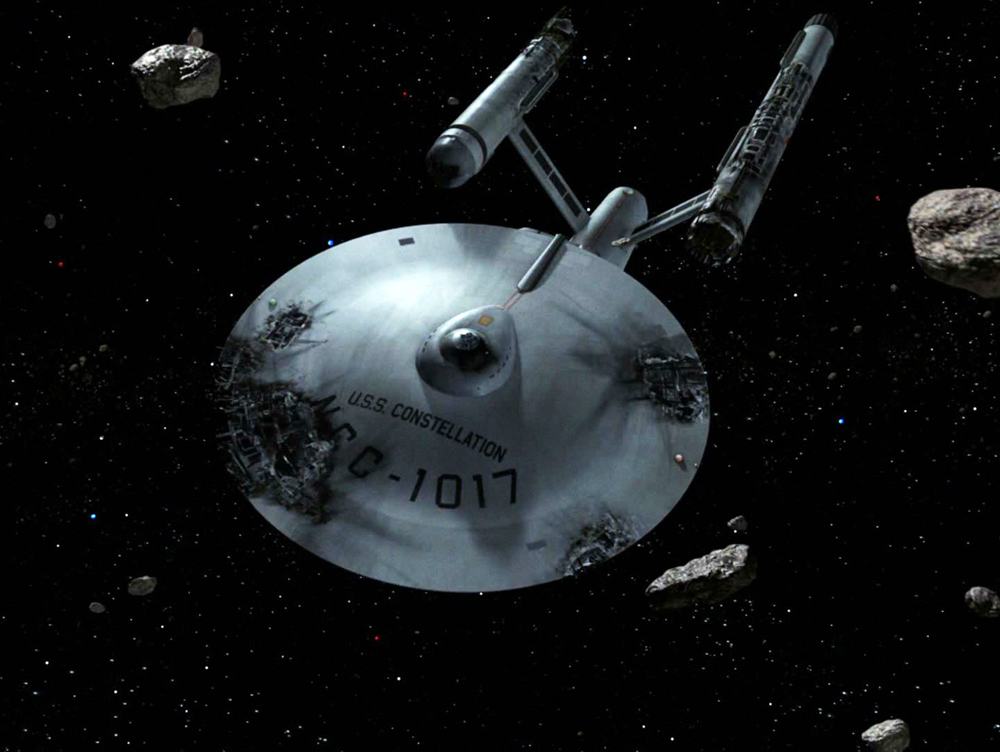
Spoiler warning: this isn’t really about Star Trek.*
The first Star Trek fallacy: Nothing requires maintenance. Seriously, what does Scotty do in-between battles that destroy half of the ship? We see the engineering crew members monitoring something or other on computers, but does nothing on board ship ever require physical maintenance? This is science fiction, so I don’t expect** to see a clogged toilet getting snaked, but surely the engines require some work now and again? The first Alien movie was notable for showing us a spaceship that had aged badly and required constant physical maintenance work from 28 percent of its crew to keep functioning.*** The most recent Star Trek movie has a spaceship that’s been sitting abandoned for hundreds of years being fixed by an alien who knows nothing about it with a few hours of help from the human crew and it runs just fine.
Here’s the non-fallacious version: everything ages. All materials we use are subject to degradation over time; we perform maintenance to return them as close as possible to their working condition.
The second Star Trek fallacy: Everything can be repaired as good as new. Human technology in Star Trek, unless it’s completely destroyed, can be repaired and will look and function just like it did before it was damaged.
Here’s the non-fallacious version: Because everything ages, there’s always a difference between new material put in as a repair and its surroundings. Also, connections between new and old material are almost never invisible. One could argue that half of the philosophy of historic preservation work is an attempt to deal with this seemingly basic issue: new material is not old material.
The third Star Trek fallacy: Everything can be understood, monitored, and adjusted. This one is the most pernicious because it’s really the cause of the other two fallacies. If something – engines, “sensors,” weapons – doesn’t work, you fiddle**** with it until it does. And everything that can be fiddled with is known. And the results of the fiddle can be predicted even if it’s never been done before.
Here’s the non-fallacious version: Dealing with reality is an empirical act. Our understanding of reality is based on models, whether explicitly as in an finite-element frame model, or implicitly as in the simple beam formulas. All models are inaccurate because they are incomplete: if they were complete they’d be reality and not models. The simplest model that I use on a regular basis is the formula for bending moment in a simply-supported, prismatic-section, uniformly loaded beam*****: M=wL²/8. That formula is reasonably accurate but still has problems, including the following:
- Very few beams in actual buildings are truly simply-supported. Even joists in a rowhouse get some end restraint from the masonry at the end pocket.
- A lot of beams don’t have entirely prismatic sections. If a steel beam has bolt holes in a flange it’s got a non-negligible, if minor, variation in section properties at that point.
- The formula is dependent on the assumption that “plane sections remain plane.” This is almost never true, but the variations are small so we pretend it’s true.
Imagine, now, the difficulties of truly understanding the assumptions and inaccuracies in a spaceship and compare it to Star Trek. Or, to put it another way, a decent percentage of NASA’s staff works on how to deal with the unexpected happening because of minor variations in empirical reality. Engineers, and to some degree everybody engaged in design and construction, spend our time dealing with the effects of decay and inaccuracy, which is to say dealing with reality. One consolation in OSE’s practice is that every time we design a solution to a problem caused by aging or weathering, we’re addressing a problem that’s harder than the crew of the Enterprise has to willing to tackle.
* I have been reading and watching science fiction for more than forty years. I watched and rewatched the original Star Trek series in syndication about five years after it went off the air, but I was never a huge fan and I’ve been hit or miss with it since. Obviously, it’s a hugely successful franchise that means a lot to many people. That success is why the fallacies that I mention here matter.
** However, I’d think highly of the science fiction movie or TV show that showed this.
*** This has since become a more common trope, but not in the Star Trek universe.
**** I’d love to know how many times over the fifty years since Star Trek hit the air that a script used the word “phase” to mean “I’m fiddling with this piece of machinery to make it do something slightly different.”
***** It took me three qualifiers just to describe the formula. There’s proof of the limitations of modeling.


